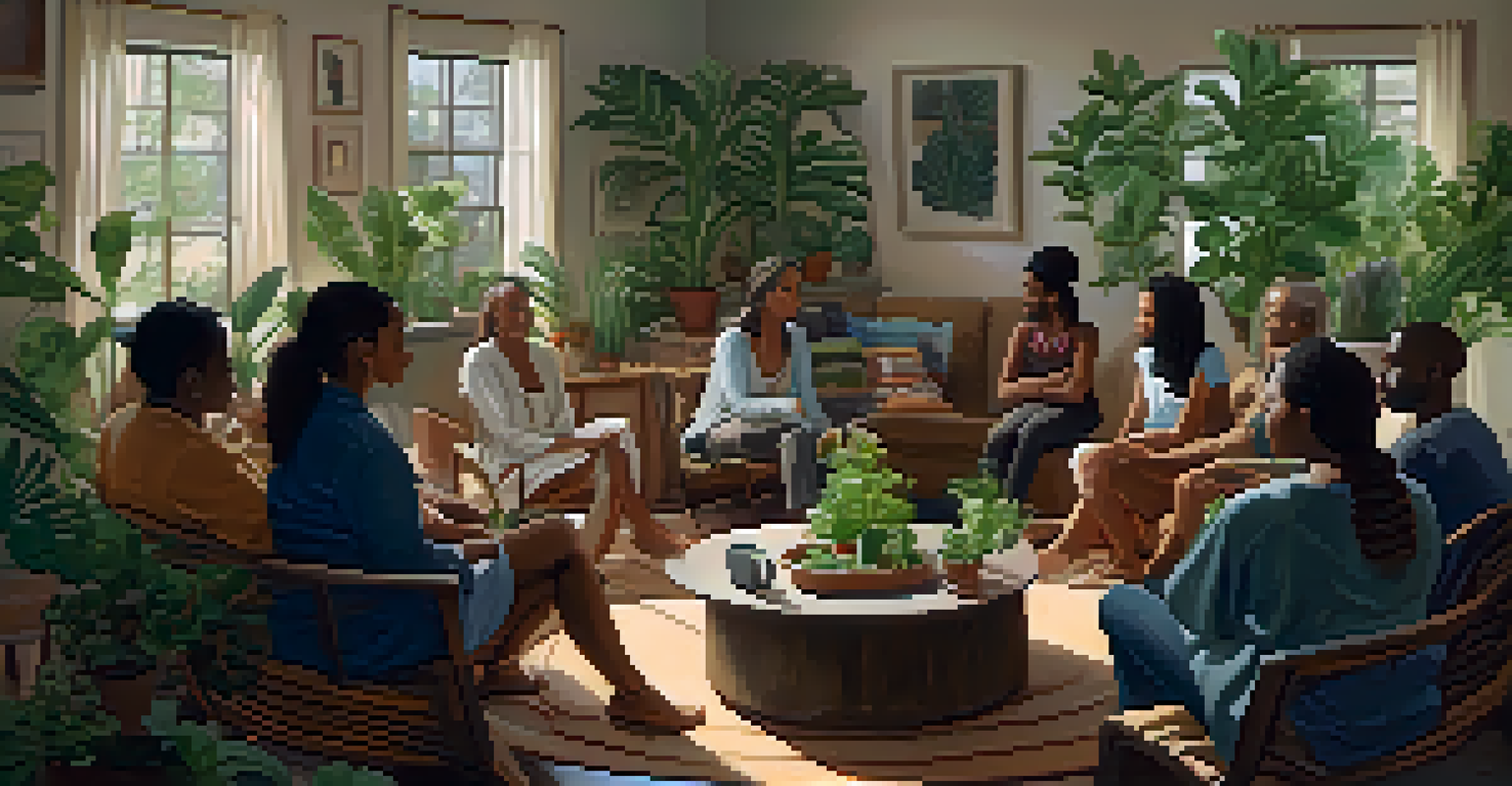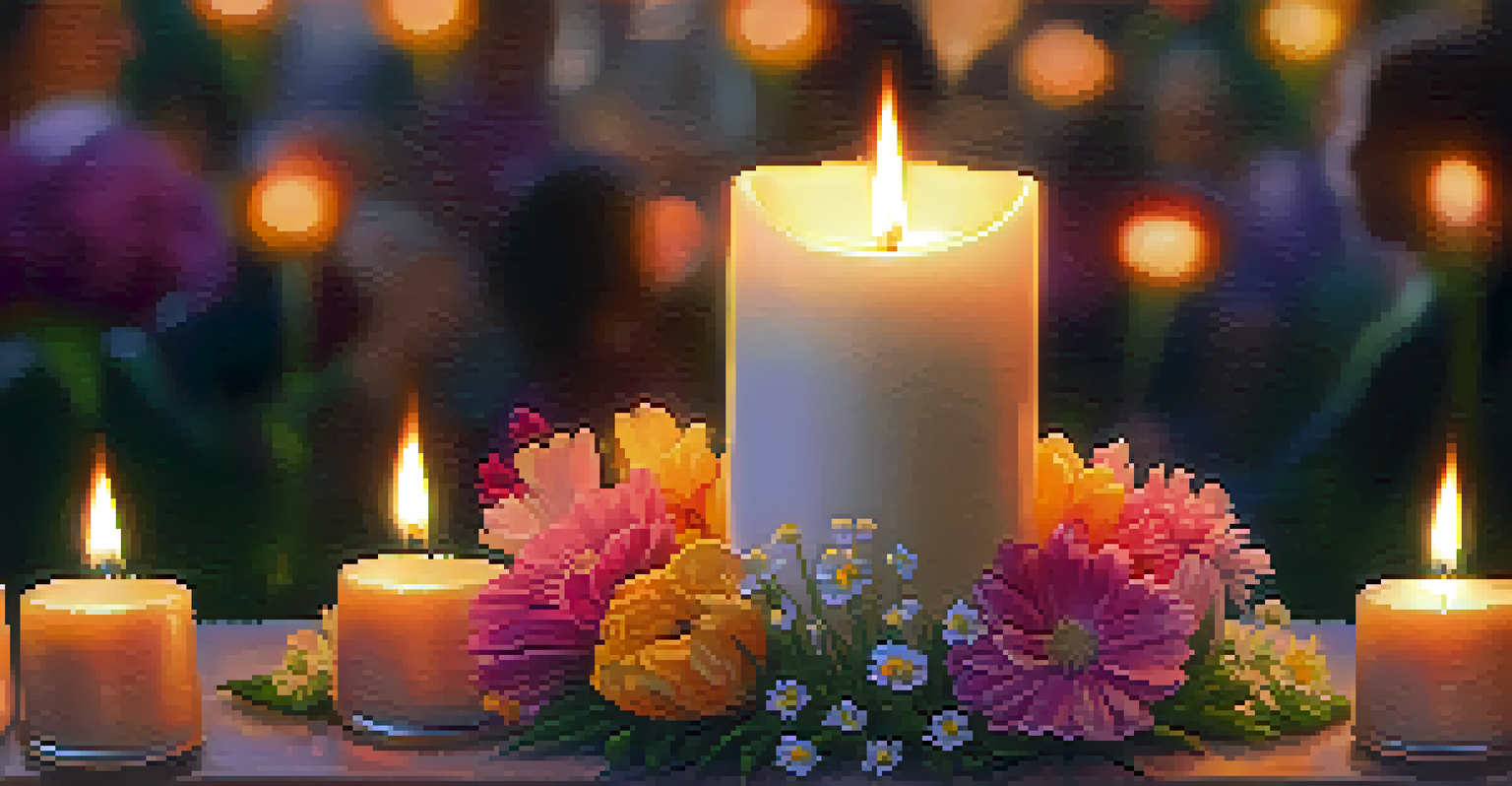Entheogenic Integration: Moving Forward After Grief

Understanding Entheogens and Their Role in Healing
Entheogens are substances that can induce altered states of consciousness, often used in spiritual or therapeutic contexts. These can include natural plants and fungi like ayahuasca or psilocybin mushrooms. Many people have reported profound insights and emotional healing after experiences with these substances.
Grief can be the garden of compassion.
When faced with grief, individuals may find it challenging to process their emotions fully. Entheogens can facilitate a deeper exploration of those feelings, helping people confront their loss more openly. This process can lead to a sense of connection with the departed, fostering healing and acceptance.
It's important to approach entheogenic experiences with intention and care. Having a supportive environment and a knowledgeable guide can make a significant difference in how effectively these substances can aid in grief integration.
The Connection Between Grief and Personal Growth
Grief is not just a painful experience; it can also be a catalyst for profound personal transformation. Many people find that navigating their grief leads to a deeper understanding of themselves and their values. This journey often requires confronting uncomfortable emotions, which can be daunting but ultimately rewarding.

When someone experiences a loss, they may reevaluate their life priorities and relationships. This process can spark a desire for change or an exploration of new paths, leading to personal growth. Engaging with entheogens during this time can amplify these insights, allowing individuals to see their grief as a part of a larger narrative.
Entheogens Aid Grief Healing
Entheogens can facilitate deeper emotional exploration and connection with lost loved ones, promoting healing and acceptance.
By embracing grief as a transformative experience, individuals can cultivate resilience and a renewed sense of purpose. This shift in perspective can be incredibly empowering, helping them move forward while honoring their loved ones.
Practical Steps for Integration After Entheogenic Experiences
Integration is the process of making sense of and incorporating insights gained from entheogenic experiences into daily life. After a profound session, it’s crucial to take time for reflection, journaling, or discussing the experience with trusted friends or therapists. This helps solidify the lessons learned and integrate them into one’s worldview.
What we once enjoyed and deeply loved we can never lose, for all that we love deeply becomes a part of us.
Creating rituals or practices that honor the relationship with the deceased can also be an essential part of integration. This could include setting up a memory altar, lighting candles, or engaging in creative expression. Such acts can provide ongoing support and connection to the loved one.
Additionally, seeking community support can be invaluable. Joining groups focused on grief and entheogenic integration can create a space for shared experiences, fostering a sense of belonging and understanding.
Navigating Challenges During the Integration Process
While the integration of entheogenic experiences can be transformative, it’s not always straightforward. Individuals may encounter feelings of confusion, anxiety, or even resistance as they try to make sense of their insights. Acknowledging these emotions as part of the journey is crucial for moving forward.
Sometimes, the revelations brought forth by entheogens can be overwhelming, leading to a feeling of being unmoored. It’s essential to practice self-compassion during this time, giving oneself permission to feel lost or uncertain. Connecting with others who have undergone similar experiences can help normalize these feelings.
Grief Sparks Personal Growth
Navigating grief can lead to profound personal transformation and a renewed sense of purpose as individuals reevaluate their values and priorities.
Incorporating grounding practices such as meditation, breathwork, or nature walks can also assist in navigating these challenges. By staying connected to the present moment, individuals can create a sense of stability amidst the emotional upheaval.
The Importance of Community Support in Grief Integration
Community plays a vital role in the healing process, particularly after experiencing grief and undergoing entheogenic journeys. Finding supportive networks, such as grief groups or psychedelic integration circles, can provide a safe space for sharing experiences. This connection can alleviate feelings of isolation often associated with loss.
Listening to the stories of others can also be incredibly validating and offer new perspectives on one’s grief journey. Building relationships with individuals who understand the nuances of both grief and entheogenic experiences can foster a sense of belonging and shared healing.
Moreover, community support can encourage accountability in the integration process. Friends or group members can help remind individuals to continue exploring their insights and make necessary changes in their lives.
Honoring Loved Ones: Rituals and Remembrances
Creating rituals to honor lost loved ones can be a powerful way to integrate grief and maintain a connection. These rituals can be simple, such as lighting a candle on special anniversaries, or more elaborate, like holding a memorial gathering. Such practices serve as reminders of love and the continued bond with those who have passed.
Incorporating elements from entheogenic traditions can add depth to these rituals. For example, using natural offerings like flowers, herbs, or food can symbolize the cycle of life and death. This connection to nature can also remind individuals of their shared humanity and the natural processes of grief.
Community Supports Grief Integration
Finding community support through grief groups and integration circles can alleviate feelings of isolation and foster accountability in the healing process.
By actively remembering and celebrating the lives of loved ones, individuals can shift their focus from loss to gratitude. This change in perspective can be incredibly healing, allowing for both grief and joy to coexist.
Embracing the Journey: Moving Forward with Hope
The journey of grief and integration is deeply personal and often nonlinear. Acknowledging that it’s okay to take small steps forward can help ease any pressure to 'move on' too quickly. Embracing the journey means allowing oneself to feel and process emotions as they arise, without judgment.
As individuals integrate their experiences, they may discover newfound strengths or passions. This can lead to a more authentic life, one that honors both their grief and the lessons learned through it. Entheogens can serve as a guide in this process, illuminating paths that may have previously been overlooked.

Ultimately, moving forward with hope means recognizing that grief can coexist with joy. By embracing the complexity of emotions, individuals can cultivate a richer, more meaningful life, honoring their loved ones while also finding peace within themselves.